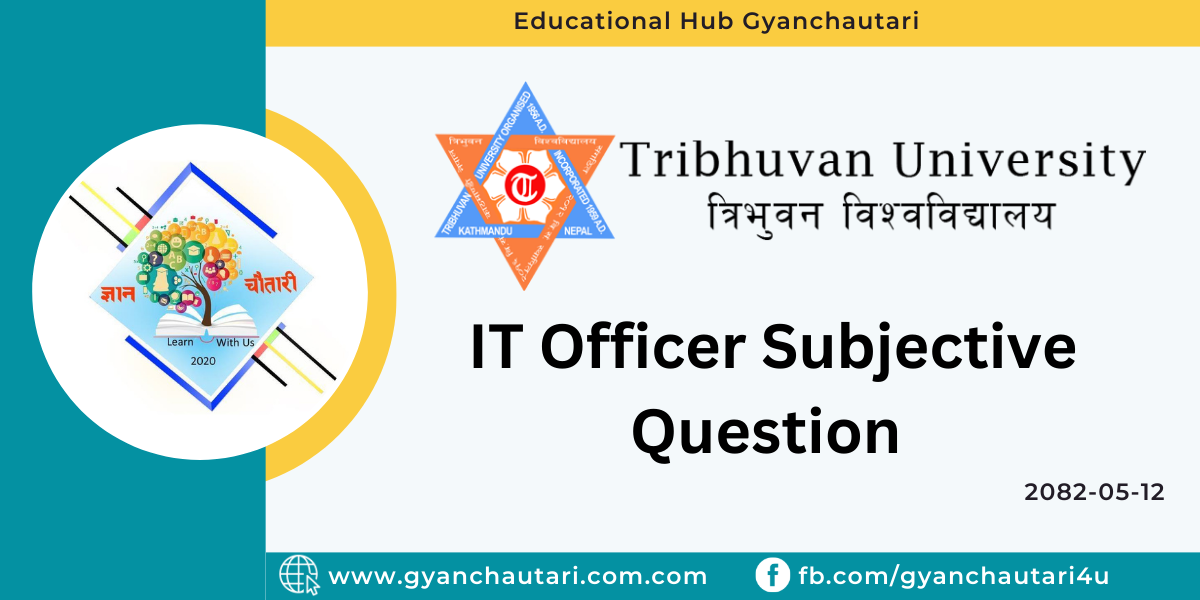त्रिभुवन विश्वविद्यालय
सेवा आयोग
प्राविधिक, अधिकृत तृतीय, प्राविधिक अधिकृत (सूचना प्रविधि) पदको खुला प्रतियोगितात्मक लिखित परीक्षा
२०८२/०५/१२
Section: “A” 50 Marks
- Explain major components of CPU with block diagram and mention their functions. (3+2=5)
- What is pipelining in computer architecture? Discuss its advantages and potential hazards. (1+4=5)
- Compare and contrast linear and non-linear data structure with at least two examples of each. What are the limitations and advantages of each type? Analyze how a data structure is suitable for implementing recursion algorithms. (4+2+4=10)
- Explain how operating system ensure security and protection of system resources. Discuss the concepts of User Authentication and Encryption with examples. (4+3+3=10)
- Explain the concept of concurrency control in database management system. Describe any two concurrency control techniques. (2+8=10)
- Explain the concepts of symmetric and asymmetric encryption with examples. Compare the two methods based on key management, speed and security. Describe how RSA (asymmetric) and AES (symmetric) algorithms work at a high level. Include a real-world application scenario for each. (10)
Section; “B” 50 Marks
- How does Nepal’s Electronic Transactions Act, 2063 establish legal validation for digital signatures? Link this to e-commerce security. (5)
- Define software process model. Explain any two software process models in details. Mention the factors that determine which model to adopt for software development. (2+6+2=10)
- Explain how modern organizations use Management Information System (MIS) to support decision-making at different management levels. Compare transactional processing system with executive support systems, highlighting their distinct features and purposes. Discuss the role of data visualization in presenting complex business information effectively, providing examples of visualizations tools. (10)
- Describe the role and function of the University Grants Commission (UGC) Nepal in promoting higher education. Analyze how UGC’s quality assurance and funding roles can address key challenges in the higher education sector. (5+5=10)
- Tribhuvan University (TU) plans to implement a Smart University Management System to modernize administration for all students across all campuses and affiliated colleges. Key challenges includes manual processes, outdate infrastructure, weak communication and lack of planning data.
As TU’s Technical Officer; 6+5+4=15
- Propose a high-level system architecture covering database design, testing and integration with existing TU systems using sound software engineering principles.
- Recommend how AI/ML, Big Data, IoT and Cloud Computing can be applied for smart features (e.g, predictive analytics, resource optimization) including security considerations.
- Outline a phased implementation plan aligned with TU and UGC policies addressing procurement, staff training and change management.
for more content about officer click here




